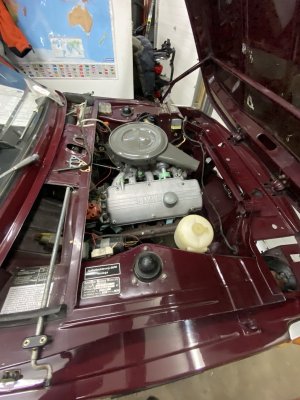I have several aluminum parts I'd like to refinish for both my E9 and right at the moment an engine block and carburetor bodies for a motorcycle I'm hoping to finish this winter. My goal is to have it looking 100% like the day it was new vs better and shinier. I have a Bead blast cabinet and am quite familiar with how this renders parts and strips away the original properties. Would Vapor blasting do the same thing to these parts more or less? Anybody have parts done by Dry Ice blasting?
Tia
Tia


